7 Types of Bach Flowers (With Pictures)
-
Pete Ortiz
- Last updated:
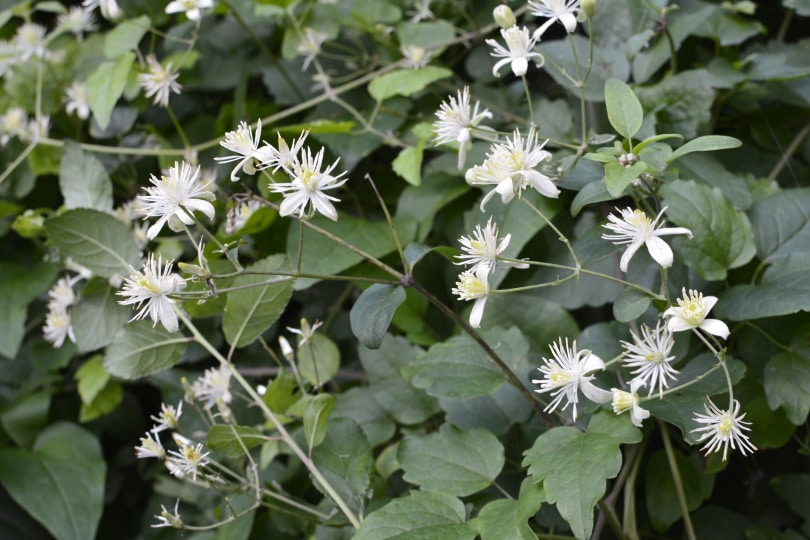
Between 1886 and 1936, a British microbiologist by the name Edward Bach had a suspicion that some flowers had properties that made them useful as complementary treatments. Since he had the prerequisite tools needed to prove his theory, he started researching. And when the results came out, to his delight, the findings were positive.
Indeed, extracts from those flowers had properties that could cure various illnesses, including mental diseases. They were nicknamed the ‘Bach Flowers,’ and the name just stuck to date.
If you wish to learn about them, look for a pen and paper, and start taking notes.
The 7 Types of Bach Flowers
1. Aspen (Populus Tremuloides)

The aspen has so many other names, but the most common ones include the Popple, Poplar, Quaking aspen, Trembling aspen, and the American aspen.
To an untrained eye, it will just be a flower much like any other. But to someone who has studied the medicinal value of different herbs, they’ll right away know they have a plant with analgesic and antiseptic qualities.
These are properties that make it beneficial to people grappling with respiratory disorders, skin conditions, and even open wounds.
Patients who are allergic to aspirin are however encouraged to stay away from aspen, since it also contains salicin. Salicin, for your information, is an alcoholic β-glucoside—an active ingredient meant to numb pain by reducing the production of chemicals responsible for inducing it.
In the culinary industry, the inner bark of its tree is normally dried, and then grounded into powder, so that it could be used to thicken soup. We’ve also seen a few chefs mix it with strawberries to create some sort of flavoring.
2. Old Man’s Beard (Clematis Vitalba)
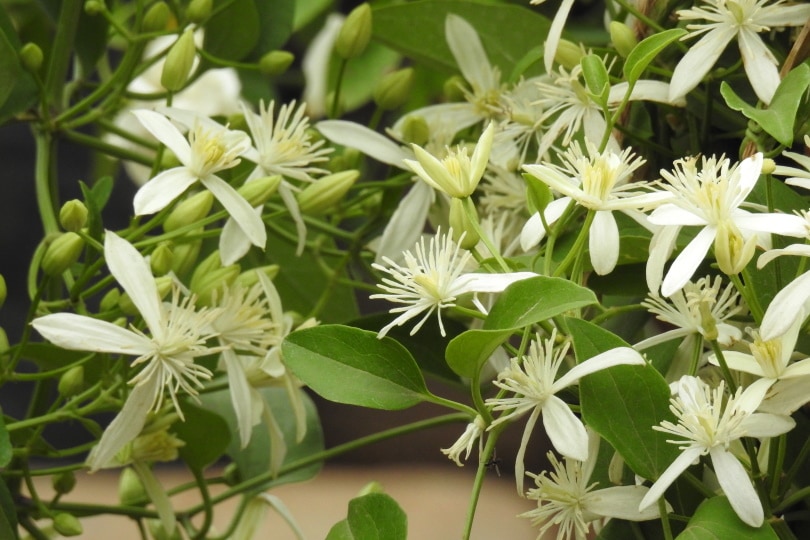
The clematis is a flower of a plant that mostly grows in slightly alkaline soils. This plant can form a canopy that’s 180 square yards, blocking all the sunlight from reaching any vegetation beneath it.
You’ll want to stay away from it when it’s been crushed or squeezed because there’s a chemical in there that causes mucous membrane irritation and some sort of skin reaction.
It is believed that the clematis vitalba is effective in the treatment of patients who suffer depression, those who battle anxiety daily, and those who feel like their emotions are all over the place. It’s also the herb prescribed to people who cannot distinguish fantasy from reality, and kids who have a hard time concentrating on anything.
Lessening joint and arthritic pain is the other health benefit of using clematis. Especially the kind that worsens during the cold weather. And even though this isn’t common, some patients claim the herb has helped them manage their abdominal pain and distention.
3. Larch (Larix)
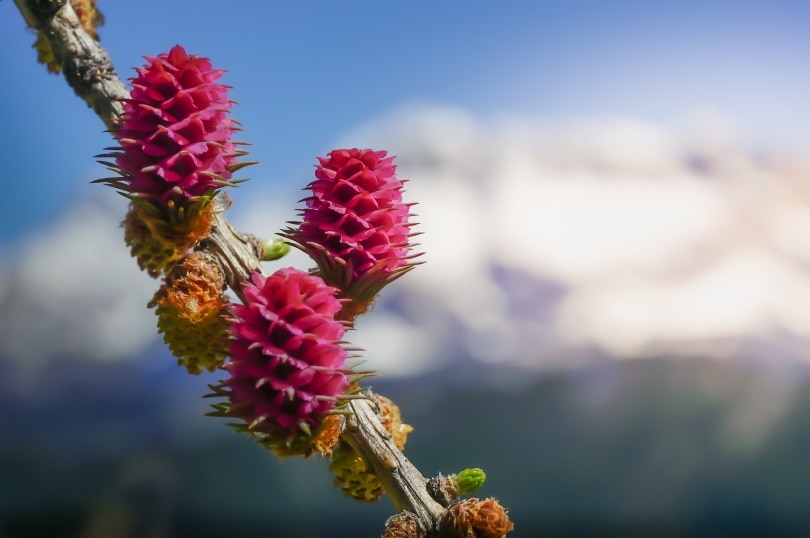
We do have different species of the larch flower, and all of them have numerous health benefits. However, if we had to rank them based on what they have to offer, the larch arabinogalactan would automatically take the top spot.
That’s largely because arabinogalactan, which is a chemical compound mostly found in herbs and several other plants, is highly concentrated in this particular species.
Arabinogalactan has starch-like properties that make it difficult for it to be broken down by salivary enzymes, and those found in the small intestines. Also, it always finds a way to get to the large intestines undetected, and once it gets there, the fermentation process begins.
During this process, more intestinal bacteria such as lactobacillus are produced. And this is a good thing because they normally have effects that are beneficial to our digestive tracts.
Some studies suggest that larch arabinogalactan have a way of inhibiting the growth of cancerous cells in the liver, while boosting the strength of our immune system.
4. Olive (Olea Europaea)
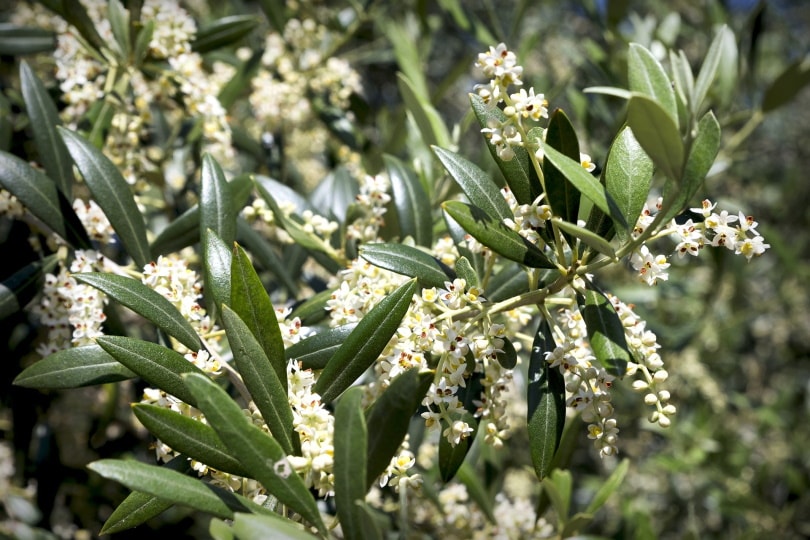
Olive flowers are rich in so many plant minerals and compounds. Some of those minerals include iron, sodium, calcium, and even copper. The irons are often used up by red blood cells to circulate oxygen around the body, while copper eliminates the risk of heart disease. The goal of the sodium is to ensure the muscles and nerves operate smoothly, as calcium assists in building and maintaining stronger bones.
The compounds that we were referring to include quercetin, oleanolic acid, tyrosol, hydroxytyrosol, and oleuropein. All these antioxidants work as a unit to prevent liver damage, heart disease, lower blood pressure, and regulate fats in the system.
Olive extracts have also been known to be a remedy for people looking to manage exhaustion and regain vitality. So, if you’re thinking of ways to mitigate the effects of hard labor, you can incorporate olive into your whole-food-based diet. You’ll either rest properly or feel re-energized.
5. Rock Rose (Cistus)
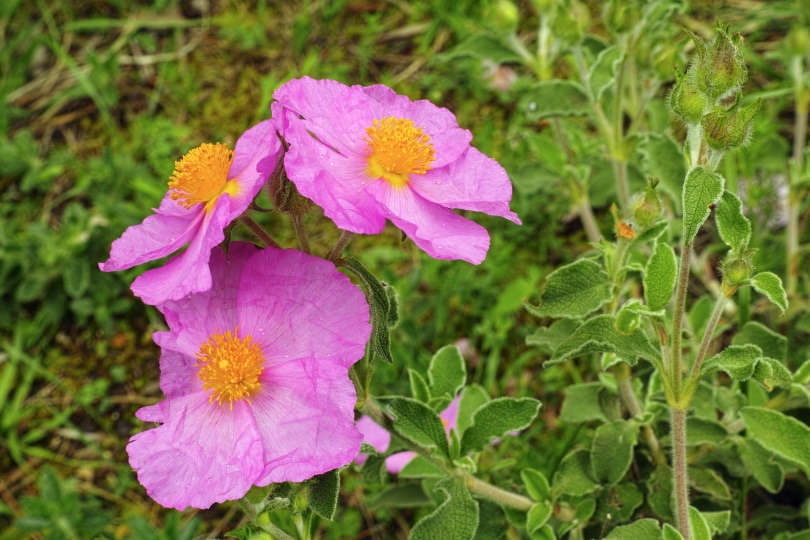
If you’ve been looking for the Rock Rose, you’ll find it in areas of high altitude and rocky terrains. This ever-green shrub was first introduced to us here in the United States in the 1800s, but it naturally grows in Mediterranean climates. Cistaceae is the name given to the plant’s family, and they come in different types. Most of them are considered high maintenance, but the Cistus is pretty common in the West.
Here’s a fun fact:
The Cistus plant goes by the moniker the “fire follower.” Botanists around the world decided to name it when they discovered that wildfire can activate its dormant seeds. That also explains why they are normally everywhere in the years that follow a wildfire.
Moving on, because the rock rose flower has a strong antioxidant count—flavonoids, tannins, and polyphenols—most people like to apply its extracts on their skin. Scientists say that this makes them appear healthier and a tad bit younger.
Rock rose oils, on the other hand, are useful in managing fungal and microbial infections, or inflammation. Of course, all this is made possible by the camphene, borneol, and viridiflorol chemical compounds found in it.
6. Wild Rose (Rosa Canina)
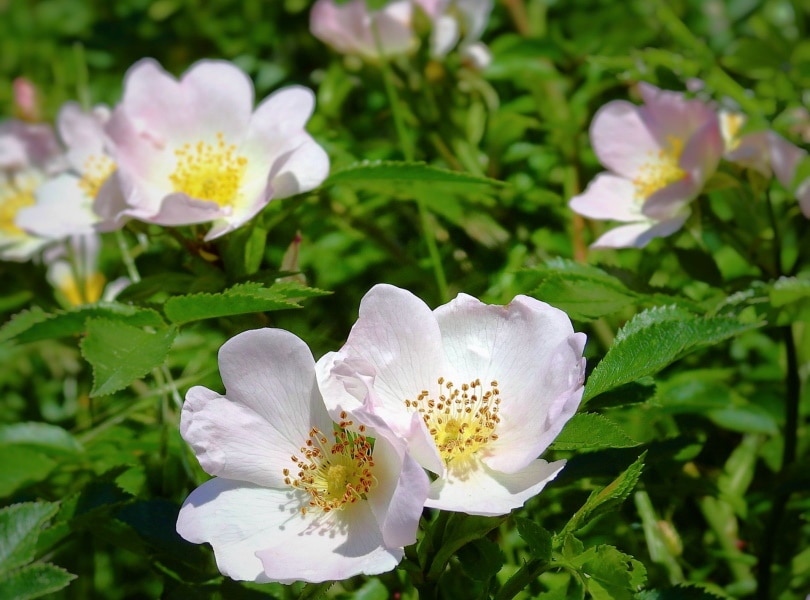
The wild rose produces rose hips—also called rose haw—one of the best sources of vitamin C. Scientists have proven that rose hips have a content level that is 10 times that found in blackcurrants. To put that into context, you’ll only need three rose hips maximum to get the recommended daily dose of your vitamin C.
You should however consider the fact that the amount of vitamin C found in rosehip will depend on how it was stored, the way it was dried, and also when it was harvested. If it wasn’t harvested at the right time, dried using the wrong method, or stored for the longest period, its content level will drastically drop.
Wild rose can be used to fight stress, fatigue, or as a recovery supplement. All that’s possible because it has antiviral, antibacterial, anti-inflammatory, and antioxidant attributes.
In addition to all that, the plant itself produces fruits that have mild diuretic and cholagogue effects. That’s one way of saying they’ll help your kidney get rid of excess salt and facilitate bile flow in your system.
7. Scleranthus (Scleranthus Annuus)

The scleranthus flower is often used in the production of homeopathic medicine. Homeopathic means the product can stimulate the healing process. People who rely on this type of medicine are those who usually have a hard time making critical decisions.
They are often indecisive when it matters the most, and immediately fall into depression once they realize the outcome or consequence of their indecisiveness is going to be dire.
The goal of the medicine is to mitigate that fear factor and increase intuitive confidence in a person. In some cases, it manages to lessen the feeling of loneliness and facilitates rational thinking.
Related Read: 43 Common Types of Flowers in the US (with Pictures)
Conclusion
Bach flower extracts and oils have been used for eons, especially when treating conditions such as anxiety, HIV, depression, and even cancer. We can’t quite tell you whether they are 100 percent effective or not, because the results vary. Some people think they are, while others think they have a placebo effect.
The only thing that we can guarantee is, they always have an effect of sorts.
Featured Image Credit: weha, Shutterstock
Contents


